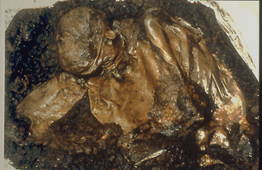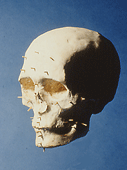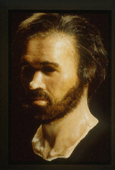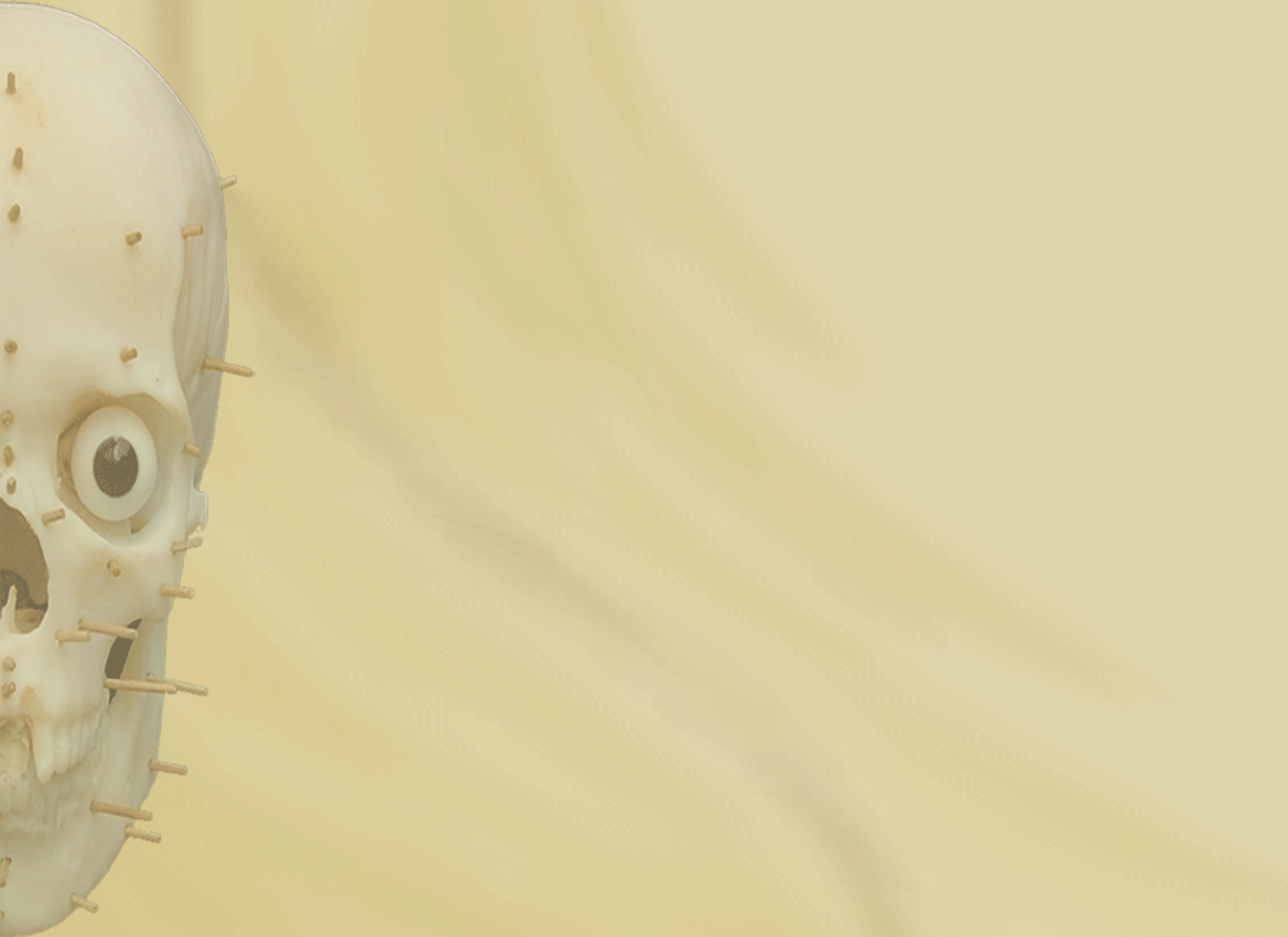Lindow Man
In August 1984, the upper half of a man's body was discovered in the peat cuttings at Lindow Moss in Cheshire. Once the body was proven to be ancient and not the result of a modern accident or murder, the body (preserved by the peat) was handed over to the British Museum for study. The study discovered that "Lindow Man" was between 1.68 and 1.73m in height (5'6" and 5'8"), and of sound health (although with minor arthritis in the lower back). He appeared to have been the victim of a ritual sacrifice sometime in the first century AD (around the time of the Roman invasion of Britain).
As the skull was inaccessible for casting, an exact replica was created from a series of radiographs (a technique developed for clinical use). Once the replica had been created, it was possible to carry out the reconstruction technique in the normal manner. Unlike many of the other reconstructions, Lindow Man still had much of the soft tissue remaining (albeit grossly distorted by the peat), so it was possible to incorporate these into the finished reconstruction as accurately as possible.
The finished reconstruction was cast in wax, and eyes and hair in accordance with the evidence were added.





